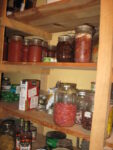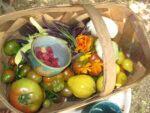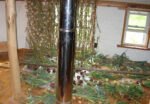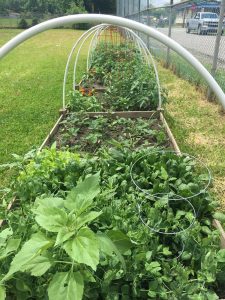A version of this column first ran in the Roane County (WV) Reporter and Times Record as part of a gardening series. Support local journalism! Subscribe to your local newspaper. This is one of a series of blogs for new gardeners. Start reading the whole series here: Part 1.
There are many ways gardens differ, and as a result, the best advice on how to do things might differ from one garden to another. Certainly this is true if you compare gardens in widely separate climactic zones; for example, take one in a cold place with a short growing season, say in northern Minnesota, versus one in to a warm-all-year Louisiana where people focus on a spring garden, take the too-hot summer off, then start another garden in the fall. Or an Arizona garden where getting enough water to the crops is the issue, versus one in the Pacific northwest where it’s too wet most of the time. In fact, in Oregon they get more rain than we do but they get it all in the winter so irrigation is a problem—and the winters are milder but so are the summers, so they have trouble getting decent tomatoes or winter squash.
Even in one area—like here—people have different challenges. My neighbor, whose garden is only 700 feet from mine, has sandy soil but mine is clay (both of us have amended our soil to make it much better, with organic matter and also in my case, sand). If your garden is in a poorly drained area, as one of mine is, raised beds make a lot of sense. This may also apply if you have to garden in a site full of rocks or old building debris—you might want to build tall boxes, with boards probably, so your plant roots are not in contact with that inhospitable stuff. Those high boxes are also good if bending over to work is a problem for you.
On the other hand, if your garden is on wind-exposed hillside, it may dry out too quickly. Here you don’t want raised beds, and you do want mulch—and maybe a windbreak. Plants that are particularly vulnerable to too much hot sun may benefit from placement in a spot that gets some shade, or protection from wind (or both).
But there are few places in this region that get a great deal of wind. Instead of too much sun, you may get too little—and there is really no solution here but cutting down a tree. I’m an environmentalist but I give you dispensation for this—if it allows you to grow your own food, you’re justified since it cancels out the environmental cost of industrial agriculture growing that part of your food.
Then there are the differences in soil chemistry. Some have acidic soil and some alkaline (though few of the latter around here unless you’ve used too much lime or wood ashes). You need a soil test to look into this question, along with whether you have deficiencies of important nutrients. The WVU Extension will test your soil free but you have to pay to mail them a half cup or so of it. This is the worst time of year as it’s the busiest, but if you need a soil test you should still do it now because the sooner you send in your sample, the sooner you’ll get the results. Just don’t wait on starting your garden.
I don’t think there are any problems that come with a perfectly flat garden but if your garden is on a slope—ha! If? This is West Virginia, of course your garden slopes, at least a little. Here the problem is erosion, as soil works its way downhill. The main solution is running your rows or beds along the contour—if they point downhill the soil can move much faster. With my permanent beds, soil slowly migrates down into the aisles and I periodically clean out an aisle, shaking the dirt onto a bed and collecting the weeds for the compost.
I think just about every garden has trouble with deer and other varmints—unless you have a good fence. There are many ways of repelling deer (and rabbits and groundhogs and other marauders) but a good fence is the most reliable.
Besides elevation, another difference between gardens is orientation. That is, does your garden slope toward the west, and is the sky open in that direction—or some other? A southern exposure is best for early warming but not ideal for fruit trees as it will encourage earlier bloom. An eastern exposure is desirable as it gets sun early, to dispel the moisture that encourages fungal infections, but may get some afternoon shade, in the hottest part of the day. A northern slope is not best, but as long as it’s open, so it gets several hours a day of sun in the main growing season, it will do.
Read the rest: Part 1. Part 2. Part 3. Part 4. Part 5. Part 6. Part 7. Part 8. Part 9. Part 10. Part 11. Part 12. Part 13. Part 14. Part 15. Part 16. Part 17. Part 18. Part 19. Part 20. Part 21. Part 22. Part 23. Part 24. Part 25. Part 26. Part 27. Part 28. Part 29. Part 30. Part 31. Part 32. Part 33. Part 34. Part 35. Part 36. Part 37. Part 38. Part 39. Part 40. Part 41. Part 42. Part 43. Part 44. Part 45. Part 46.













